 I’ve never met Jaimie Vernon but we’re friends. We’re the kind of friends that didn’t even exist a dozen years ago. Yes, we’re Facebook friends. It’s because of music. Vernon runs Bullseye Records which represented the band Klaatu through part of their career. I’m a Klaatu fan and stumbled onto a related online group in which Vernon played an active role. The e-group eventually became more or less dormant but we remained e-friends in the Facebook world. I’m sharing this, not because it has anything to do with the contents of this book, but to explain how I even know of the book’s existence. I am not in the habit of chasing down either cop books or cemetery stories.
I’ve never met Jaimie Vernon but we’re friends. We’re the kind of friends that didn’t even exist a dozen years ago. Yes, we’re Facebook friends. It’s because of music. Vernon runs Bullseye Records which represented the band Klaatu through part of their career. I’m a Klaatu fan and stumbled onto a related online group in which Vernon played an active role. The e-group eventually became more or less dormant but we remained e-friends in the Facebook world. I’m sharing this, not because it has anything to do with the contents of this book, but to explain how I even know of the book’s existence. I am not in the habit of chasing down either cop books or cemetery stories.
For most, I imagine the phrase “cemetery stories” is associated with tales of hauntings and the supernatural. The tales in True Tales from a Cemetery Cop are not those. I knew that going in. I’d read the earliest versions of a few of them on Vernon’s Facebook page when, still freshly amused or appalled, he related them initially. While some of the behavior documented in this book might not seem exactly natural to everyone, it is decidedly not supernatural.
Even though Vernon has written other books, including the two volume
Canadian Pop Music Encyclopedia, this was the first time I’d read anything of his beyond a few liner notes and those Facebook postings. I was happy to discover that he is a very competent writer and often a thoughtful one as well.
The book comes from Vernon’s one year stint as a security guard at Toronto’s largest cemeteries. It was a job he took to keep his family afloat through some rough times. Like many jobs of this sort, guarding cemeteries has plenty of short periods of hyperactivity separated by long periods of no activity at all. Being alone with your thoughts is something that most guards, patrolmen, and motel clerks experience but the thoughts that come while waiting for the next speeder or call for more towels are not the same as those that come in the middle of the night in the midst of thousands of people not one of which is living. Vernon shares some of these thoughts without being overly spooky or preachy.
But the “true tales” promised in the title come not from his time alone or non-existent interaction with the dead but from his interaction with the living. Sometimes it’s with living critters like raccoons who call the cemetery home but more often it is with living human visitors. The human residents present no problems at all. There are some funny incidents and some incredibly sad ones and some that are simply frustrating. Along with those lonely night reflections, the tales provide a glimpse at a job we all know must exist but which we have probably never even thought about.
Vernon’s writing is enjoyable and easy to read. He provides all the details necessary without being burdensome. He avoids specifics that could embarrass anyone although I found myself hoping some of the players were embarrassed at the very least. The book is self published and there are some “typos” that might not make it to print with a full publishing house team involved. With today’s spell checking technology misspelled words rarely get through but they do sometimes get turned into the wrong word. That has happened here in a few cases. An example is the word ‘undo’ appearing rather than ‘undue’. The rest are of the same caliber. They never prevent understanding but they might cause some readers to pause.
I won’t claim that the book made me cry or laugh but the job had Vernon doing both along with shaking his head at what some of the living consider appropriate behavior around the dead. As I was reading the last part of this book, publication of a second volume was announced. It’s on my list.
Signed copies are available directly from the author at CemeteryCop.com
True Tales from a Cemetery Cop: To Serve and Protect the Dead, Jaimie Vernon, Bullseye Publishing/CreateSpace Independent Publishing Platform (September 18, 2016), 9 x 6 inches, 160 pages, ISBN 978-1537138022
Available through Amazon.

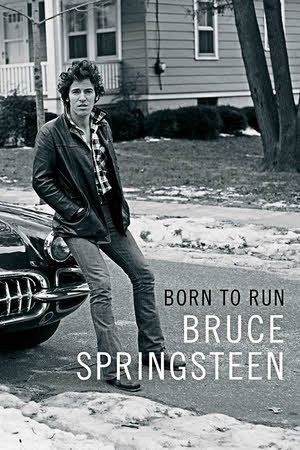 It’s exactly what you’d expect. That’s not to say that there is no new information and no surprises but the sometimes almost poetic writing style is exactly what I expected from a man who has produced some of the most notable English language lyrics of the last four decades. It’s no secret that some of those lyrics were just a bit autobiographical so it’s possible to think of this as sort of a much longer and more detailed version of the story he’s been singing since he first greeted us from Asbury Park.
It’s exactly what you’d expect. That’s not to say that there is no new information and no surprises but the sometimes almost poetic writing style is exactly what I expected from a man who has produced some of the most notable English language lyrics of the last four decades. It’s no secret that some of those lyrics were just a bit autobiographical so it’s possible to think of this as sort of a much longer and more detailed version of the story he’s been singing since he first greeted us from Asbury Park.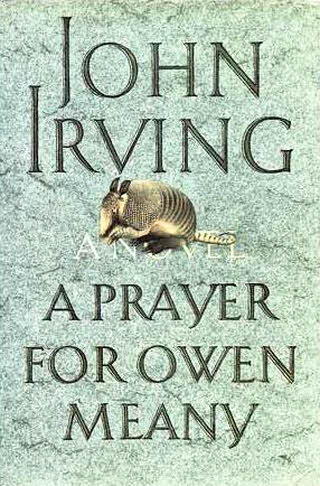 I’m not really going to review this twenty-seven-year-old book that I’m guessing thousands of professional reviewers have written millions of words about. When I first read it, more than two decades ago, I thought it was one of the best books I had ever encountered. A recent re-read only reinforced that. The re-read was prompted by plans to attend a performance of a play based on the novel. I’m going to say some things about that performance but this really isn’t a review of it either. In fact, I find myself stumped in trying to explain just exactly what this is. Whatever it is, it was triggered by my recent experience with a book and a play.
I’m not really going to review this twenty-seven-year-old book that I’m guessing thousands of professional reviewers have written millions of words about. When I first read it, more than two decades ago, I thought it was one of the best books I had ever encountered. A recent re-read only reinforced that. The re-read was prompted by plans to attend a performance of a play based on the novel. I’m going to say some things about that performance but this really isn’t a review of it either. In fact, I find myself stumped in trying to explain just exactly what this is. Whatever it is, it was triggered by my recent experience with a book and a play. In its preface, Lyell D. Henry Jr. suggests that this book is something of a compromise. The reason is that he once set out to write about every detail of the Jefferson Highway and the association behind it. That’s a lot of details and, especially with no known central source for records or maps, a formidable task. Henry says he “…settled on writing a book that would open with a general accounting of JHA’s early pursuit of the entire highway but then narrow its focus to the highway through Iowa.” The Jefferson Highway: Blazing the Way from Winnipeg to New Orleans is indeed a book of two parts. The first four chapters cover the history of the organization responsible for the entire highway; The last three tell the story and describe the route of the road in Iowa. The scale may be less and the focus may be narrower than what Henry once had in mind but, within that narrowed focus, there is certainly no detectable compromising of accuracy or completeness.
In its preface, Lyell D. Henry Jr. suggests that this book is something of a compromise. The reason is that he once set out to write about every detail of the Jefferson Highway and the association behind it. That’s a lot of details and, especially with no known central source for records or maps, a formidable task. Henry says he “…settled on writing a book that would open with a general accounting of JHA’s early pursuit of the entire highway but then narrow its focus to the highway through Iowa.” The Jefferson Highway: Blazing the Way from Winnipeg to New Orleans is indeed a book of two parts. The first four chapters cover the history of the organization responsible for the entire highway; The last three tell the story and describe the route of the road in Iowa. The scale may be less and the focus may be narrower than what Henry once had in mind but, within that narrowed focus, there is certainly no detectable compromising of accuracy or completeness.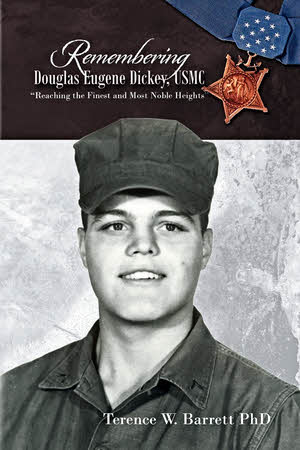 Remembering Douglas Eugene Dickey is something I’ve done for a long time. We were classmates through twelve years of school. We weren’t super close. Not like the teammates on the football squad that broke a thirty-eight game losing streak and not nearly as close as the four other classmates who enlisted in the Marines with him but we were friends. With something like sixty-five students in our graduating class everybody knew everybody. Yes, I’ve been remembering Doug Dickey for a long time.
Remembering Douglas Eugene Dickey is something I’ve done for a long time. We were classmates through twelve years of school. We weren’t super close. Not like the teammates on the football squad that broke a thirty-eight game losing streak and not nearly as close as the four other classmates who enlisted in the Marines with him but we were friends. With something like sixty-five students in our graduating class everybody knew everybody. Yes, I’ve been remembering Doug Dickey for a long time.


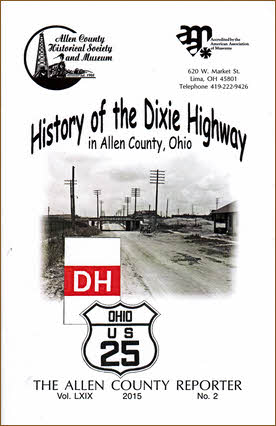 I could have called this a pamphlet review. That’s technically what it is. Or, since one definition of pamphlet is “a small book”, I could have called this a small book review. I decided to leave the title be but, in line with the publication’s size, I’ll try to be brief and do a small small book review.
I could have called this a pamphlet review. That’s technically what it is. Or, since one definition of pamphlet is “a small book”, I could have called this a small book review. I decided to leave the title be but, in line with the publication’s size, I’ll try to be brief and do a small small book review.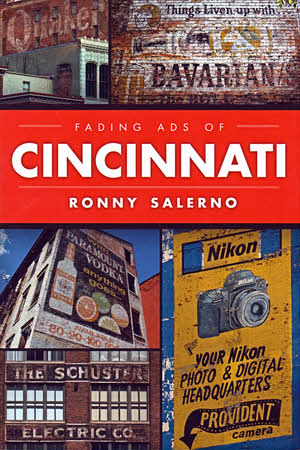 Buying local is a good thing and so is reading local. I was able to combine the two recently. November 30 was the official release date for a new book about Cincinnati and in the early evening its author made the book and his signature available at a downtown location that appears between its covers. The book was Fading Ads of Cincinnati, the author Ronny Salerno, and the location Igby’s Bar inside a building with a fading “TWINE PAPER” painted on its side. Those two dim words are typical of the fading ads that are the book’s subject. How could I not?
Buying local is a good thing and so is reading local. I was able to combine the two recently. November 30 was the official release date for a new book about Cincinnati and in the early evening its author made the book and his signature available at a downtown location that appears between its covers. The book was Fading Ads of Cincinnati, the author Ronny Salerno, and the location Igby’s Bar inside a building with a fading “TWINE PAPER” painted on its side. Those two dim words are typical of the fading ads that are the book’s subject. How could I not?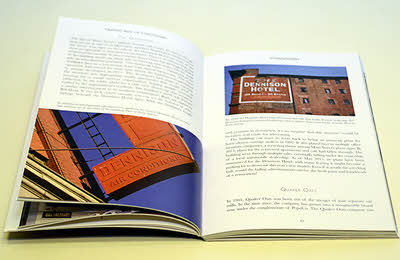 The photos aren’t left to stand alone. Captions describe each of them, of course, and many get multiple paragraphs of attention. Salerno has been successful in digging up many of the signs’ histories with some of the best stories coming from signs identifying local or regional companies that are no longer with us. Names like Shillito’s and Brendamour’s will be recognized by many Cincinnatians and probably some others as well. Out-of-towners might not be familiar with local landmarks like Davis Furniture (“The Friendly Store”) or the Dennison Hotel (“105 Rooms – 60 baths”) but they are exactly what I and some other locals think of when we think of “fading ads” or the more common “ghost signs”.
The photos aren’t left to stand alone. Captions describe each of them, of course, and many get multiple paragraphs of attention. Salerno has been successful in digging up many of the signs’ histories with some of the best stories coming from signs identifying local or regional companies that are no longer with us. Names like Shillito’s and Brendamour’s will be recognized by many Cincinnatians and probably some others as well. Out-of-towners might not be familiar with local landmarks like Davis Furniture (“The Friendly Store”) or the Dennison Hotel (“105 Rooms – 60 baths”) but they are exactly what I and some other locals think of when we think of “fading ads” or the more common “ghost signs”. Salerno brings up the phrase “ghost signs” in the introduction and says people often thought he was writing about the supernatural when he used the term. “Fading advertisements”, he says, doesn’t have that problem. Fair enough but it’s just possible that his position also has something to do with the book’s predetermined title. “Ghost sign” slips into the book a time or two and in the final chapter Salerno more or less acknowledges the validity of both. As for me, I’m comfortable and most familiar with the term “ghost signs” (and “ghost bridges” and “ghost towns”) so I’ll just continue to think of Fading Ads of Cincinnati as a book about ghost signs.
Salerno brings up the phrase “ghost signs” in the introduction and says people often thought he was writing about the supernatural when he used the term. “Fading advertisements”, he says, doesn’t have that problem. Fair enough but it’s just possible that his position also has something to do with the book’s predetermined title. “Ghost sign” slips into the book a time or two and in the final chapter Salerno more or less acknowledges the validity of both. As for me, I’m comfortable and most familiar with the term “ghost signs” (and “ghost bridges” and “ghost towns”) so I’ll just continue to think of Fading Ads of Cincinnati as a book about ghost signs.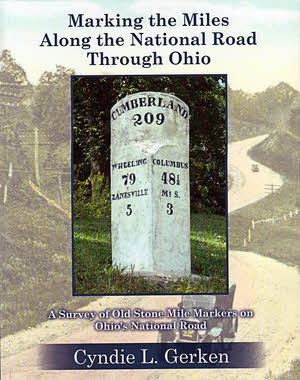 That’s a pretty long book title. There’s a subtitle, too, which makes the whole thing Marking the Miles Along the National Road Through Ohio: A Survey of Old Stone Mile Markers on Ohio’s National Road. It’s long because it, just like the book it identifies, is accurate and precise. The book accurately and precisely locates the 175 mile markers originally set, as accurately and precisely as early nineteenth century technology and local politicians would allow, beside the Ohio portion of the very first federal highway. With all that accuracy and precision you might think this volume would be completely dry and boring but that’s not the case. Stories about the road, the countryside, and even the markers themselves lighten and soften things considerably. Color photos and maps make the book attractive.
That’s a pretty long book title. There’s a subtitle, too, which makes the whole thing Marking the Miles Along the National Road Through Ohio: A Survey of Old Stone Mile Markers on Ohio’s National Road. It’s long because it, just like the book it identifies, is accurate and precise. The book accurately and precisely locates the 175 mile markers originally set, as accurately and precisely as early nineteenth century technology and local politicians would allow, beside the Ohio portion of the very first federal highway. With all that accuracy and precision you might think this volume would be completely dry and boring but that’s not the case. Stories about the road, the countryside, and even the markers themselves lighten and soften things considerably. Color photos and maps make the book attractive.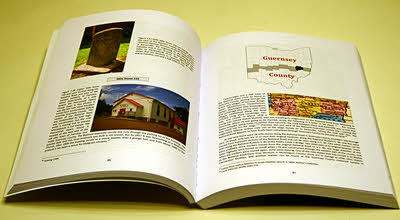 Seven of the ten Ohio counties through which the National Road passed are covered in individual chapters following the introduction. No markers were ever placed in the three westernmost counties on the route as federal funding ended near Springfield in Clark County. Each of these chapters begins with an overview of the county that includes a summary of how many original markers there were, how many remain at their original location, how many exist elsewhere, and how many are lost. Each marker is then addressed individually. With few exceptions there is at least one picture. If a given marker survives, a current photo is included and one or more historical photos are usually presented regardless of whether or not the marker is still around. Understandably, markings on many of the older stones are not exactly legible. Not to worry. Appendix B contains crisp drawings of the inscription of every marker. Markers can often be seen, accidentally perhaps, in old postcards and other photos and many of these appear in the book. Each marker’s history is given and stories about the marker or the area around it frequently add a little fun and background. Placed among the individual marker descriptions are sections of US Geological Survey 7.5 minute topographical maps showing the location of the markers three at a time. Other National Road related landmarks are often shown on the maps as well.
Seven of the ten Ohio counties through which the National Road passed are covered in individual chapters following the introduction. No markers were ever placed in the three westernmost counties on the route as federal funding ended near Springfield in Clark County. Each of these chapters begins with an overview of the county that includes a summary of how many original markers there were, how many remain at their original location, how many exist elsewhere, and how many are lost. Each marker is then addressed individually. With few exceptions there is at least one picture. If a given marker survives, a current photo is included and one or more historical photos are usually presented regardless of whether or not the marker is still around. Understandably, markings on many of the older stones are not exactly legible. Not to worry. Appendix B contains crisp drawings of the inscription of every marker. Markers can often be seen, accidentally perhaps, in old postcards and other photos and many of these appear in the book. Each marker’s history is given and stories about the marker or the area around it frequently add a little fun and background. Placed among the individual marker descriptions are sections of US Geological Survey 7.5 minute topographical maps showing the location of the markers three at a time. Other National Road related landmarks are often shown on the maps as well.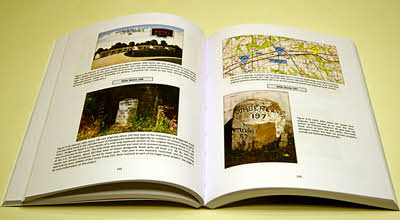 Bringing all of this information together is clearly a major accomplishment but Gerken, a past ONRA president herself, says the information is only a portion of what she has collected on the National Road in Ohio. A well deserved breather follows wrapping up Marking the Miles Along the National Road Through Ohio. Nothing is currently scheduled or promised but the future could see a Gerken penned treatise on bridges or taverns or toll houses or something else. I certainly hope so. I like accuracy and precision and I also like anecdotes and insight. Marking the Miles… provides a pretty good mix.
Bringing all of this information together is clearly a major accomplishment but Gerken, a past ONRA president herself, says the information is only a portion of what she has collected on the National Road in Ohio. A well deserved breather follows wrapping up Marking the Miles Along the National Road Through Ohio. Nothing is currently scheduled or promised but the future could see a Gerken penned treatise on bridges or taverns or toll houses or something else. I certainly hope so. I like accuracy and precision and I also like anecdotes and insight. Marking the Miles… provides a pretty good mix.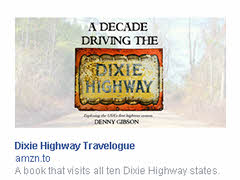 On Friday morning a friend observed on Facebook that he was getting email from every website he had ever visited that had something to sell. His situation was hardly unique. I’m rather confident that everyone with any sort of internet connection was seeing an uptick in activity on the official beginning of open season on customers. The barrage had been building as anxious hunters fired off emails and other communications telling us that their Black Friday started on Thursday or Wednesday or even earlier. This is, I assume, the same sort of time warp that allows certain drinking establishments to advertise “The world’s longest Happy Hour”. I considered emailing him some sympathy but didn’t for two reasons. One was that to do so would be to add to the tide of useless messages in his inbox. The other was that I would soon be part of the problem.
On Friday morning a friend observed on Facebook that he was getting email from every website he had ever visited that had something to sell. His situation was hardly unique. I’m rather confident that everyone with any sort of internet connection was seeing an uptick in activity on the official beginning of open season on customers. The barrage had been building as anxious hunters fired off emails and other communications telling us that their Black Friday started on Thursday or Wednesday or even earlier. This is, I assume, the same sort of time warp that allows certain drinking establishments to advertise “The world’s longest Happy Hour”. I considered emailing him some sympathy but didn’t for two reasons. One was that to do so would be to add to the tide of useless messages in his inbox. The other was that I would soon be part of the problem.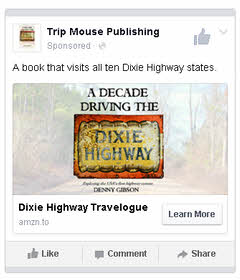 The image at the top of this article shows the ad that appears in what Facebook calls the “Desktop Right Column”. The one at left is for the “Mobile News Feed”. Other variations appear in other channels. As can be seen in the “News Feed” version, the ads are sponsored not by me but by
The image at the top of this article shows the ad that appears in what Facebook calls the “Desktop Right Column”. The one at left is for the “Mobile News Feed”. Other variations appear in other channels. As can be seen in the “News Feed” version, the ads are sponsored not by me but by